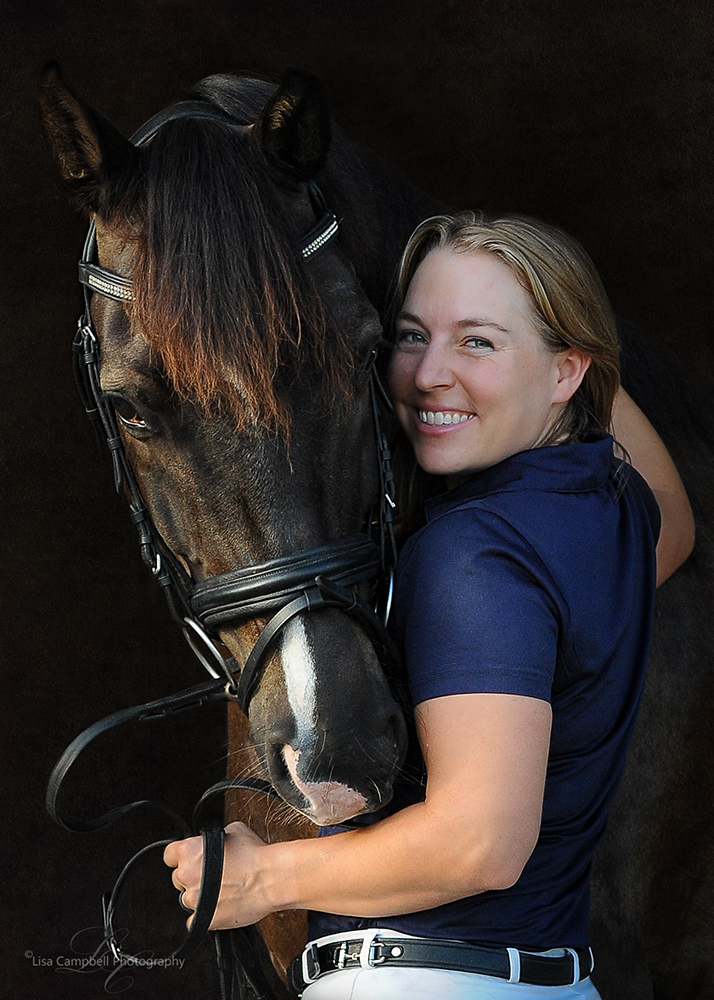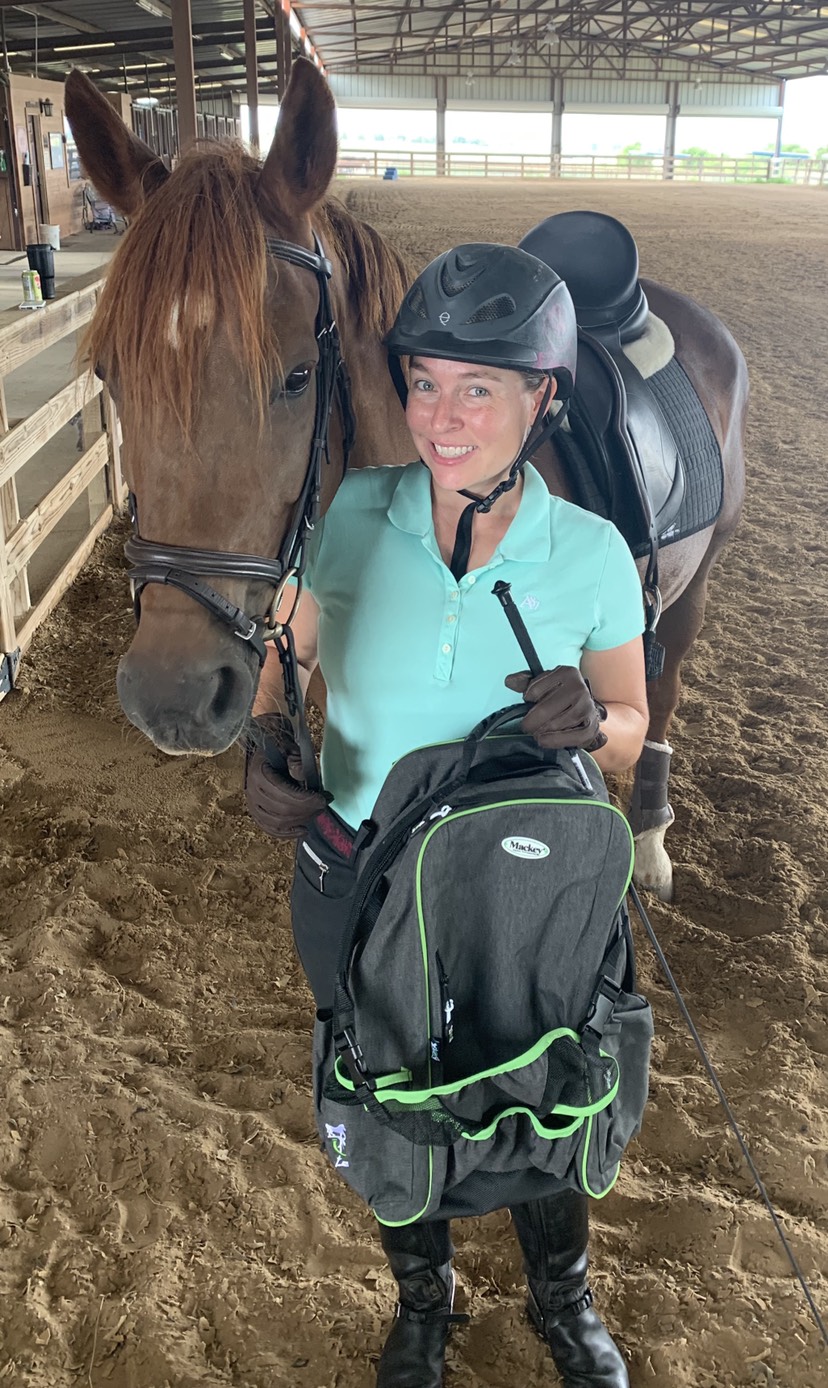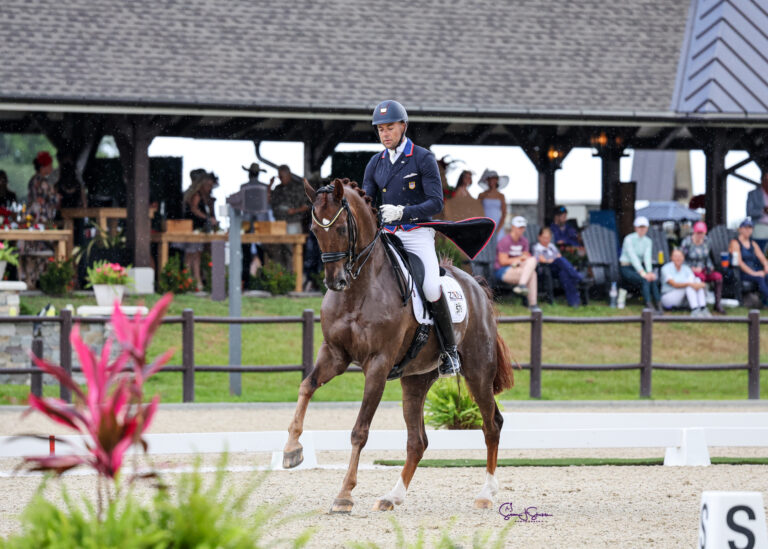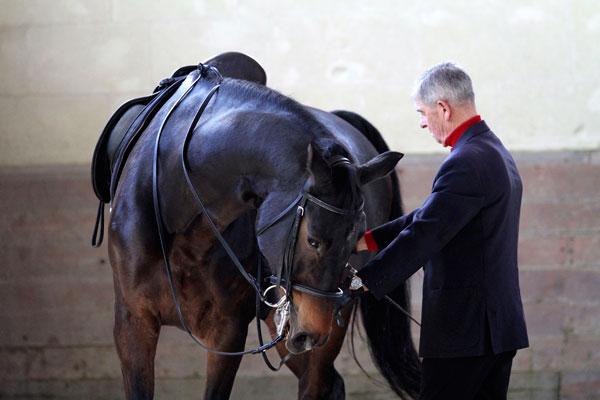I am so excited to have been chosen as the winner of the professional division of Dressage Today’s 2019 Blogger Contest! I am honored to take on this role and share my journey with you over the next year.
I have been a rider for most of my life and a professional for more than 10 years. I have worked with all levels of riders and have a real love for helping riders navigate the difficult aspects of the mental and emotional challenges that arise when riding, training and showing. In addition to riding and teaching, my passions include personal development and spirituality. Riding and being around horses can be a huge catalyst for growth, as horses can change us in ways no other creature can.

I am passionate about carrying on the art of classical riding and I feel a huge responsibility as a professional to make sure that this dying art survives. I run Concordia Dressage, with my husband, Martin, outside Austin, Texas, with this vision in mind. I also have a blog, Mindful Riding, in which I share my insights on mindfulness, spirituality and how these relate to your riding experience. My aim is to help riders balance mind, body and spirit so they can find peace and joy in their riding and in life.
As a rider, I have developed all of my horses from foals. I have a small breeding program that I have been operating with my parents for more than 10 years. The offspring from that program are now my main competition horses. I have trained four horses to the FEI level and I have my USDF bronze, silver and gold medals as well as my bronze, silver and gold freestyle bars—all on horses I’ve trained from babies.
I also design my own freestyles and those for clients in my barn. I absolutely love riding freestyles! It’s so different from test riding and brings in a fun, artistic and sometimes spontaneous challenge for me as a rider.
My most important role, however, is that of being a mom to my two young daughters, Marie (4 years)
and Julianne (20 months). Sometimes balancing life as a mother and as an equine professional can be challenging but it has really helped me to grow as a person!
Exercise of the Month: Counter Yielding in Canter
One of my favorite exercises—that I incorporate into the warm-up on nearly every horse—is counter yielding in canter. The horse’s body in canter, by its very nature, has a natural bend. According to General Decarpentry in Academic Equitation, “Absolute straightness in the whole length of the body is never natural to the horse at any pace because of congenital asymmetry, but it is at the canter that the bend is most pronounced, and the task of straightening him at this gait is especially difficult.”
By nature, the horse wants to carry his haunches to the inside of the shoulder in the canter. The canter is an asymmetrical gait, meaning the right and left limbs move in different actions. This asymmetry is what creates the natural crookedness of the canter and is the reason a horse is said to be on the right or left lead. To ride a horse truly straight in canter, you must ride the horse in shoulder-fore. However, the rider must first be able to control the outside shoulder of the horse and this is where the counter yielding can help the rider teach the horse to accept the outside leg and outside rein and therefore, gain access to the outside shoulder.
- Start this exercise in an active working canter in either direction.
- As you turn onto the long side of the arena, close your outside leg and gently push the horse toward the centerline, allowing him to straighten his body and lose the natural inside bend and flexion. You can also use your outside rein to gently flex the horse to the outside as he yields sideways away from the outside leg.
- In the beginning, ask only for a few strides toward the centerline and reward a good effort with riding forward straight ahead. When you straighten, don’t lose the access you established with the outside shoulder. You should feel increased contact with the outside rein as your horse becomes straighter throughout the exercise. You should also feel the horse’s outside hind leg begin to track straighter underneath his body, rather than drift out, where it wants to go by nature.
- For added difficulty, you can ride the counter yield, then ride straight ahead and next, yield the canter back to the rail, focusing on the outside shoulder throughout the exercise.
The most common mistake I see when riders attempt this exercise is they drop the driving aids as
they begin to yield the horse off the rail and the horse drops out of the canter and into trot. Be
sure to keep riding the horse forward in an active canter.
To ride a horse straight, you must first have access to the outside shoulder. Without outside-shoulder control, you cannot straighten a horse. This is a prerequisite to a shoulder-fore, which is critical in straightening the canter. It is also a great preparatory exercise for the half pass.
I am honored and excited to take on this role, blogging about my life as a dressage professional, as it combines my two passions: riding and writing!
I look forward to taking you on this journey with me and I am always happy to receive your feedback about things you would like me to address or questions you have about the life of a professional rider.
Keep your chin up, align your horse and ride forward!
Until next time,

Jenna
Dressage Today would like to thank Mackey Equine Accessories for generously providing prizes for our 2019 Blogger Contest. For more information about Mackey, visit MackeyUSA.com and be sure to follow them on Facebook and Instagram.











